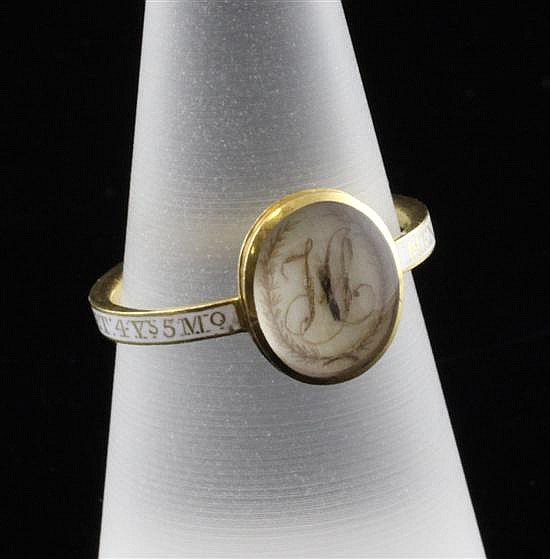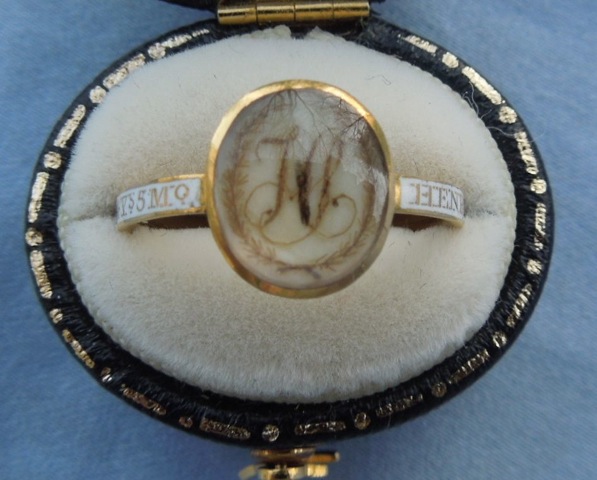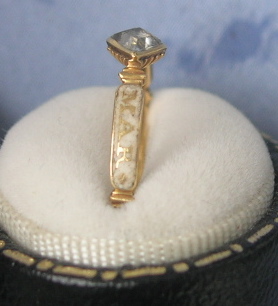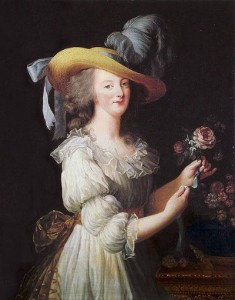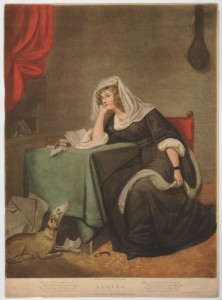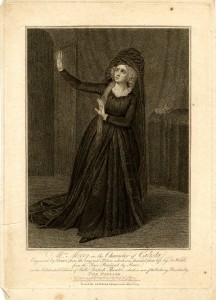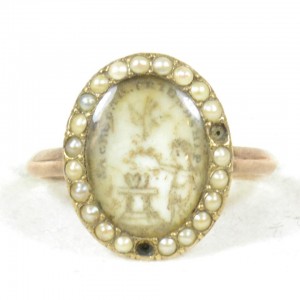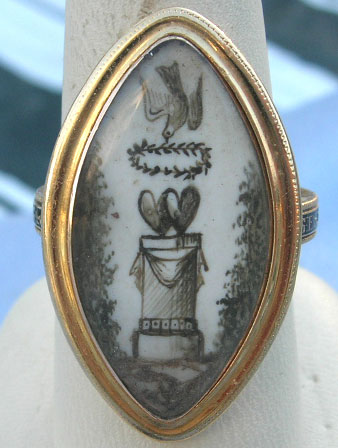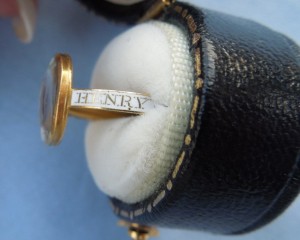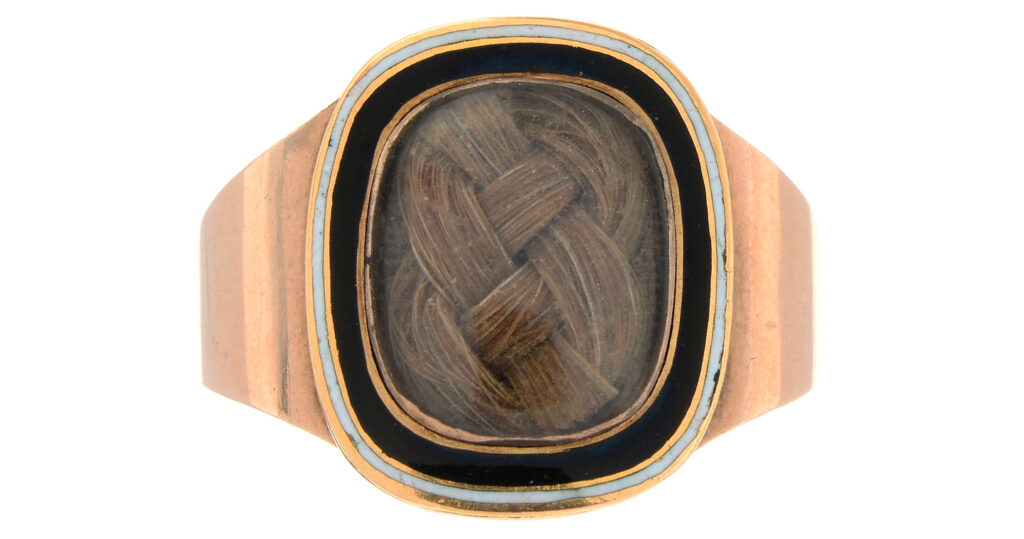1774 White Enamel Mourning Ring
Henry Smith was four years old and five months when he died, leaving behind the memory of his short existence and this ring, which we remember him by today. White enamel clearly denotes the passing of a child, without any other necessary visual identification, making this ring rare for its time and also quite valuable for the modern collector.
Around the band, “Henry Smith ob 21 Aug 1774 aet 4 ys 5 mo” is written, a style which was developed from the 1720s and grew into popularity through the latter 18th century. This style would become the predominant method of dedicating mourning rings through the 19th century within bands. In today’s article, we will take a look at the origins of the externally written band dedication in white enamel, through to the popular fashions and why these styles became so attainable.
White Enamel
White enamel is the second most popular mourning material used, next to black enamel. Black enamel, being a colour that has represented death through to pre-history, was (and still is), the colour that was inlaid in jewels, most commonly with the ‘IN MEMORY OF’ sentiment. This was highly standardised by the 19th century, but in the 18th, there was much more flexibility with the use of sentiment and enamel colour.
Death, for its reasons of desecration and entrance into entropy, lead towards black, which in itself, is the absence of light. White, when in use, is the connection to purity, innocence and virginity, show the untarnished representation in colour towards a person’s morals and values. A young person who was not married was seen as unblemished in social status and the use of the white enamel to show this virtue is why white enamel is used in this context.
Colour and symbolism became the primary elements of the mid-18th century, with the introduction of the Rococo period and its infusion of naturalistic designs in jewellery. The previous Baroque period was notorious for its bolder, dominating design, however mourning jewels represent something far more personal than what could be reflected in grander statements of building and architecture.
Cost and the essential nature of wearing a mourning jewel requires that the wearer invest some intrinsic personal affectation into the jewel and that the jewel must reflect something of its time. The 18th century essentially established the industry of mourning, due in part to the Industrial Revolution and the rise of faster methods of production and a society which was becoming more and more mobile, with greater access to education and techniques.
In 1686, the revocation of the Edict of Nantes led to Huguenot goldsmiths and jewellers emigrating to Great Britain. This was when the previous allowance by Henry IV of France provided Calvinist Protestants (Huguenots) significant rights. With this retraction, the Huguenots bought with them skills which enabled the London trade to compete with Paris. This led to greater patronage with the influx of greater designs and new elements of fashion appearing as popular in jewels. By the mid 18th century, much of the values that were carried to Britain were instilled within the new industry and led to such elements as the Rococo designs in jewellery from its continental influence.
These new techniques applied to the white enamel that is displayed in Henry’s 1774 ring. Not only did the inlay of enamel become a process which was being influenced by the influx of skills from the continent, but the styles that the Protestants introduced into England allowed for a cross-cultural sharing of new ideas. White enamel as a virtuous display of young life was becoming a mainstream consideration, which the above ring from 1699 shows.
After this influx of Huguenot talent, the mourning industry grew along with jewellery development. Mourning rings were flourishing under a stabilised government that had not been seen under the Interregnum (Cromwell) period, as well as the new wealth that was developing from the burgeoning Industrialisation movement. Comparing this ring from 1730 to the 1699 piece, there is a large degree of standardisation in the design elements. This is a ring produced after the various elements of mourning in jewellery had become common enough to interpret without being seen as a jewel for aesthetic purposes. This is clearly a ring made for the purpose of grief in the style of its time. Gone are the memento mori elements (though these were still fashionable, however they had become smaller in size) and introduced is the name and dedication of the ring written around the band.
This ring contains the last moments of the Baroque period, with the straight edged band and not the nature-inspired, Rococo elements that would dominate the following thirty years.
Here, the Rococo design elements have become the mainstream fashion in jewellery and the influence on mourning jewels shows. In the ribbon/scroll/twist motif, the ring is highly fashionable and utilises the memento mori skull underneath the crystal, which is almost a statement against its fashion. This is a ring made for death and grief, so any association with being part of the fashionable Rococo movement is not an attractive prospect.
A heavy relation to the Henry ring from 1774 is seen once more in the white enamel and the development of the text around the band. As seen in the 1730 ring, all are standardising the sentimental dedication in the band, yet just adapting to whatever style was popular. With the message of the ring being so strong as to dominate the sentimental nature of the jewel, introducing a new style at the time would be contrary to what mourning regulation required. Mourning, at this time, was Court mandated and hence was a necessity within society to present oneself. Particularly when a young child or unmarried woman in a family has died, not utilising the white colour of the enamel would be considered inappropriate and a message to the values of the family.
For the purposes of creating a ring, unlike these bespoke rings with an individual dedication written into the bands, white enamel rings with ‘In Memory Of’ which have the written dedication inside the band, were not as common until the turn of the 19th century, when a century of building mourning style into the lexicon of mainstream society had cemented it as the requirement of a family. As it had become common, then a jeweller could pre-make several rings and have them ready for when wills required rings to be given out at a funeral.
Henry’s 1774 is a close match to this piece from 1777. Here, the perfection of the Neoclassical period is captured with the depiction of the urn and weeping willow being superbly captured. Still with its crisp, sepia hues and exceptional focus on detail by the artist (note the source of the light from the left and the capturing of shadow to the right), the ring balances the style of the time with the white enamel band. Indeed, this ring and Henry’s are related in many ways. The oval shape is another identifier that was popular from the 1770s to 1780s, with the larger, navette shape taking prominence throughout the 1790s. Much of this was due to the popularity of the Neoclassical symbols themselves. As these grew popular, so did the need to have a larger canvas to display more in a ring, pendant or bracelet clasp.
Past the Neoclassical period, the streamlined geometric styles that were popular in the Regency era had shown a cleaner design to the band, with the focus on font and a singular element being the most prominent element to the jewel itself.
Everything taken from Henry’s ring is seen here at a latter date in popular, and sentimental, fashion. Combining the black and white enamel clearly denote the death of the loved one, but still show the purity of the person being mourned. By 1816, the Neoclassical period was being challeneged by the Gothic Revival, which was a swing back towards the simpler, ecclesiastical sensibilities of the middle ages. This reaction against the Neoclassical period and the excesses of the Regency was adopted by the Victorian era, yet all the elements of white enamel and the band with the surrounding dedication remained.
Fashion in the Late 18th Century
Finally, the fashion of the time was the grand statement with which the ring was worn. Why was sentimentality so united with fashion that a ring with hair in a display so large accommodated by society?
Post 1760, the Neoclassical movement had crept into the previously fashionable Rococo style of costume fabrics. Elaborate Rococo floral motifs moved to simple stripes or smaller motifs. Side hoops were discarded and lighter silks and cotton was introduced, with much influence being from the aristocracy. Marie Antoinette was painted in La reine en gaulle, by Elisabeth Vigée-Lebrun, 1783, introducing a new style that reflected the peasantry, showing a muslin chemise, straw hat and belt at the waist.
The 18th century welcomed in greater convention for mourning fashion and began to see the rise of the mourning industry. This became so much so that mourning dress was becoming desirable and the difference between mourning and non mourning dress was narrowing. Much of the fashion in this century was dictated by the fabric rather than the cut, and the silk industries in France and England held major influence on mourning wear because of this. It was Ordre Chronologique des Deuils de la Cour, (1765) where details of Court mourning in France were published, giving precise tailoring instructions. From their first days in mourning, men were permitted to appear in Court, unless it was after the death of a parent from whom they had received inheritance.
Widows had to wait one year and six weeks, with the first six months in black wool. Lord Chamberlain and Earl Marshall both ordered shorter periods of mourning in France and England respectively.
As in the 17th century, black and plain were required. Bombazine dresses trimmed in black crape, black silk hoods and plain white linen were worn with black shammy leather shoes, glove and crape fans. Jewellery was not permitted. Second mourning consisted of black dresses, trimmed with fringed or plain linen, white gloves, black or white shoes, fans and tippets and white necklaces and earrings as necessary. Grey lusterings, tabbies and damasks were acceptable for less formal occasions.
Ordre Chronologique des Deuils de la Cour was specific and influential enough to decide upon women’s fashions, as. It was specific enough to specify that; ‘dress was cut with a train and turned back with a braid attached to the side of the skirt, which was pulled through the pockets.’ This is where the overskirt is turned to the back and lifted up, revealing the petticoat underneath, called; robe retrousee dans les poche, the centre front robings were joined with hooks or ribbons. Cuffs were cut with one fold and deep hems, the waist was held in place by a crape belt that was tied on. This left two ends hanging down to the hem of the skirt.
A woman’s accessories were a crape shawl, gloves, shoes with metallic bronzed buckles, a black woollen muff and a black crape fan. Head dresses of black crape and white batiste were referenced. For much of the century, however, ‘paniers’ were fashionable, but in the French style, with loose pleating falling from the shoulders to the back. The English manner of this was with the back pleats stitched down as far as the waistline. Also popular were lace ruffles at the neck and the cuff, embroidered stomachers, silver gilt lace, appliqué work and small aprons. None of these were permitted for mourning wear. Mourning wear for women still remained consistent in that it remained plain, black or sometimes white fabric.
Wreath
An element that was popular for its time was the use of the laurel wreath to crown a loved individual. In the 1770s, with the imagery of the Greeks and Romans beginning to permeate society, images of classical figures with the laurel wreath as a sign of reverence, philosophy and recognition were attainable. Using this in much the same way as blue enamel (to consider a loved one royalty) was, the crowning of love was a sign of respect and honour.
In this piece from a decade later, when the Neoclassical movement had been fully engrained in the cultural psyche, the wreath is being placed by the dove, without the cherub, yet the elements are perfectly designed with the assurance that isn’t reflected within the sepia ring. From a design perspective, this element was used enough that a miniature painted could produce enough of these to sell to a growing consumer base without having to tailor its surrounding elements.
Initials
With its monogram written upon ivory and flanked with the laurel wreath, this ring is a monument to a child who was taken from a family at a very young age. With the circumstances surrounding this lost to time, the meaning and love still remain. Knowing that this ring was worn in public, or kept for the memory, shows that throughout the generations, this young life has still kept a memory alive.
For its moment in time, this ring is fashionable, perfectly designed and retains all the history of the previous century that had made it possible. As a passage in time, this ring also contains all the elements that would transpose onto future jewels that adapted to their surrounding fashions, but retains the dedication around the band and the white colour.
Henry Smith was four years old and five months when he died and when we all move on, this ring will always retain his memory.




